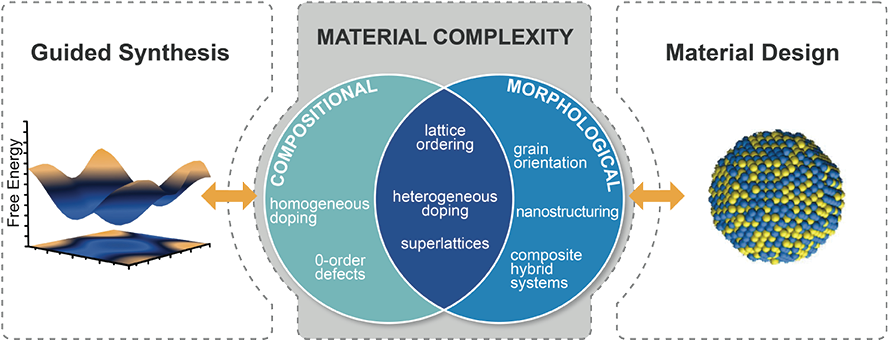
![]() Solid electrode and electrolyte materials are critical components of batteries that determine energy density, charge rate, lifetime, safety, and cost. The behavior of solid electrodes and electrolytes is often dictated by the defects in the material, the degree of disorder, and other imperfections–in other words, by the material complexity.
Solid electrode and electrolyte materials are critical components of batteries that determine energy density, charge rate, lifetime, safety, and cost. The behavior of solid electrodes and electrolytes is often dictated by the defects in the material, the degree of disorder, and other imperfections–in other words, by the material complexity.
The Science of Material Complexity Thrust considers defects and disorder in materials to be a controllable design parameter like composition, electronic, or magnetic structure. Often defects and disorder determine overall behavior, such as vacancies promoting mobility or charged substitutions controlling conductivity. This Thrust requires advances in computer simulation to model defective crystals and glasses with no long-range order, and in characterization to understand how to control the concentration of defects and degree of disorder. Material Complexity has two focus areas: design of defected and disordered materials to achieve targeted performance outcomes, and guided synthesis to stabilize targeted concentrations of defects and degrees of disorder.


